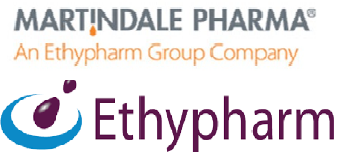Oily Phenol Injection 5% w/v
Active Ingredient:
ATC code:
C05BB05
About Medicine
Prescription only medicine
My Account Area

Martindale Pharma, an Ethypharm Group Company


Address
Jupiter House, Mercury Park, Wooburn Green, High Wycombe, Buckinghamshire, HP10 0HH, UK
Telephone
+44 (0) 1277 266 600
Medical Information e-mail
[email protected]
